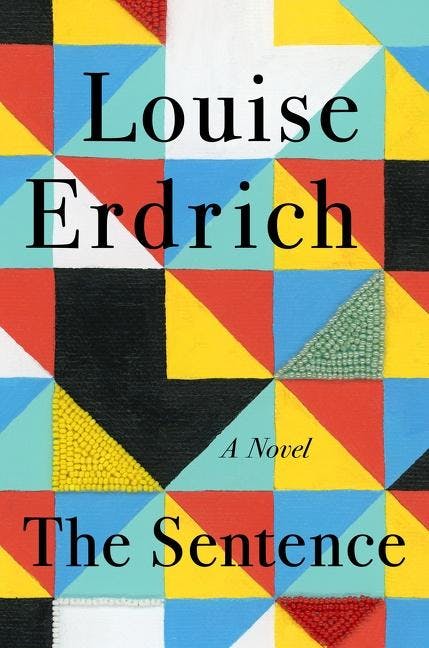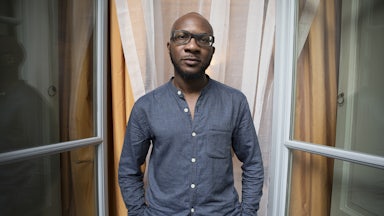In an article about W.G. Sebald for The New York Review of Books, Ben Lerner recently tried to grapple with the fact that the author, so inspired and tormented by the evils of Europe’s history, had no qualms about upsetting its inhabitants. In his novel Austerlitz, for example, Lerner writes, “Sebald repurposed Susi Bechhöfer’s experiences in the Kindertransport as she’d described them in a BBC documentary and in her book Rosa’s Child, which led her to publish an objection titled ‘Stripped of My Tragic Past by a Bestselling Author.’” Sebald lied in interviews repeatedly about real people. Lerner concluded that he was so obsessed by textuality and manipulation and the constructedness of reality by language that he simply acted out that obsession in his work.

Without wishing to re-autopsy the Bad Art Friend’s much-rummaged-in corpse, it’s fair to say literary conversation lately has focused on the negative side of borrowing from one’s real-life milieu for writing fiction. The very extremity of Lerner’s Sebald example, however, invites the question of whether the opposite is true. What about the writer whose real-life relationship to her literary subject is close and complicated, yes, but not tortured? Somebody like that might have something to add to the “whose story?” discourse, but that something might be harder to spot than the bad stuff, since writing about your community in a nonaggressive way is an intrinsically unassuming act.
Unassuming, nonaggressive, close, complicated but not tortured: These are all words that describe the uniquely generous fictions of Louise Erdrich, which are just as concerned with oppression as Sebald’s but told with a completely different attitude toward human relationships. Her 2020 work, The Night Watchman, which won the Pulitzer prize for fiction, was her seventeenth novel for adults and loosely corresponded to the facts of her own grandfather’s life. Erdrich was born in Little Falls, Minnesota, in 1954, and grew up in North Dakota, where her parents were teachers at the Bureau of Indian Affairs school. Her mother’s father served as tribal chairman for the Turtle Mountain Band of Chippewa Indians (an Anishinaabe people also known as the Ojibwe), of which she is also a member. Now based in Minneapolis, where she owns and runs the independent bookstore Birchbark Books, Erdrich places many of her characters in a similar but fictionalized social scene. “I try not to parse it out too much,” she told The New York Times a few years ago. “I’m just writing about the world that I live in and the world that I know.”
Next week, just after Halloween, we get Erdrich’s eighteenth novel, The Sentence, a ghost story. Like the preponderance of Erdrich characters, the novel’s narrator and protagonist, Tookie, is Native American and a dweller of the upper Midwest. Like Erdrich (although they are clearly very different from one another), she also works at a specialized bookstore, where her colleagues are her close allies and the books they stock and discuss with customers (Tookie mentions selling Paul Chaat Smith’s Everything You Know About Indians Is Wrong to well-meaning, offensive white customers) represent a key resource to the community. It’s in that bookstore, a place of commemoration and communication, that the haunting takes place; one that inverts the “Indian burial ground” horror trope to make a new kind of story, where white ghosts torment the Indigenous living.
Tookie begins her story with memories of “a perilous age” in her life, already into her thirties but “drinking and drugging like I was seventeen.” Written in that mixed register of surreal hilarity and doom that all the best drugs-writing sports—“I gave her a dish towel for the crying. It was the same dish towel I’d tried to kill the ants with even though I knew I was hallucinating”—this first section recounts a crime she committed in that period of her life. Once incarcerated, Tookie recalls, and abandoned by her chaotic friends, she received a dictionary from a former teacher: “The first word I looked up was the word ‘sentence.’”
Tookie had “received an impossible sentence of sixty years from the lips of a judge who believed in an afterlife,” since her crime had some tricky compounding factors to it, and yet it says right there in the dictionary: “The door is open and Go! are sentences.” Her sentence is later altered, and she walks free, but from the novel’s start Erdrich writes Tookie as a woman whose relationship with language and literature runs parallel to her history of imprisonment and oppression, as if her own life has shown how multiple forces can fight each other within the semantics of a single word.
It would spoil the novel to explain exactly how the haunting she experiences relates back to the crime she was imprisoned for. Suffice it to say, The Sentence next flits from Tookie’s wayward youth to a “present day” when Tookie, now seeming to be somewhere in her fifties, works in that Minneapolis bookshop. It’s here that she introduces us to Flora, a white customer whom Tookie pegs as a wannabe, “as in this phrase I’ve heard many times in my life. I used to wanna be an Indian.”
This sort of white person, she elaborates,
wants you to know that as a child they slept in a tipi made of blankets, fought cowboys, tied a sister to a tree. The person is proud of having identified with an underdog and wants some affirmation from an actual Indigenous person.… At its most fervent, this annoying impulse, I used to wanna be an Indian, becomes a kind of personality disorder. It turns into a descriptive noun if this fascination persists into adulthood.
Flora does all kinds of good works for the community—“Flora fostered Native teen runaways, raised money for a Native women’s refuge”—but she suffers from this disorder, one that has over time caused her whole self to disappear “into her earnest, unaccountable, persistent, self-obliterating delusion.” First Flora “told people that she had been an Indian in a former life.” Then, when she grasped that “‘Indian in a Former Life’ was a much ridiculed cliché, she changed her tune,” and began showing people a photograph of a supposed great-grandmother who, Tookie says, “looked Indianesque, or she might have just been in a bad mood.” To explain the belatedness of this discovery, Flora claimed embarrassment had kept it hidden—“another common identity trope,” which Tookie calls the “shamed-out grandma” phenomenon. In short, she’s one of those race fakers one hears about far less frequently than your Rachel Dolezals or your Jessica Krugs: the New Agey white lady in search of an origin story.
When Flora, “a striking woman in her indeterminate sixties,” mysteriously passes away while reading in bed, Tookie begins to sense her presence in the bookshop: the rustle of a down coat here, the clink of a doubly pierced ear’s jewelry there. What she wants is unclear. In an echo of her behavior in life, in death Flora is at first simply present, and makes her presence known: Her haunting takes the form of a refusal to absent herself. Tookie is alive to the irony of the situation, since it’s usually angry Native American ghosts who crop up in the popular fictions of American entertainment, seeking vengeance on living whites. “Many books and movies had in their plots some echoes of my secret experiences with Flora,” Tookie notes, since it is “standard” to depict a place “haunted by unquiet Indians.”
Referencing The Shining and The Amityville Horror, Tookie runs through the trope and its usual meaning: “Hotels were disturbed by Indians whose bones lay underneath the basements and floors—a neat psychic excavation of American unease with its brutal history.” From these 1970s origins, Colin Dickey wrote in his book Ghostland: An American History in Haunted Places, “the trope of a haunted Indian burial ground took root and spread throughout the rest of American culture,” cropping up in Poltergeist II “and in countless lesser-known films, novels, and TV shows.” But “what about unquiet settlers?” Tookie asks. “Unquiet wannabes?”
When Tookie finally consults her colleague Asema about the problem, she replies, “We’re haunted by settlers and their descendants. We’re haunted by the Army Medical Museum and countless natural history museums and small-town museums who still have unclaimed bones in their collections.” Instead of the bones being sunk into the earth, invisible and offended, Asema points out, the actual bones of Indigenous people seem more often to be kept prisoner above ground, in plain sight. She reconfigures the spatial logic of the “unquiet Indian” trope, from a sedimentary one that imagines America as a series of layers, vertically stacked on top of each other, with the Indian bones at the bottom and the haunted house at the top, into a dimensionless and infinite space.
In his 2017 profile of Erdrich for Buzzfeed, Rumaan Alam observed that she has a knack for “inventing what is not strictly real to access some place of hidden meaning.” Speaking with Alam, writer Karen Russell agreed that there is “something about the overlapping worlds inside of her novels.… Somebody’s head starts rolling after you, and it simply feels undeniable as written.” Erdrich’s confidence with such moves is part of why this works so effortlessly, Russell went on: “It’s not a registered shift—it’s the way that the entire world feels.”
This confidence is what makes Erdrich’s shift from the supernatural to the events of last year—specifically the movement for Black lives and the coronavirus pandemic—in the latter part of The Sentence so smooth. Outraged by the killing of George Floyd, the young characters of the novel take to the streets in protest, which stirs up more ghosts in Tookie, as she recalls “the early days of the American Indian Movement,” when “they listened to the police radio and showed up with tape recorders wherever there was about to be an arrest.” Back then, the police in Minneapolis, so central to the conversation around defunding law enforcement in 2020, “regularly took our people down to the river for a beating.” The struggles of Native American people for sovereignty and freedom from harassment are, in this novel, so obviously aligned with the goals of the protests that Erdrich barely needs to explain. She writes, “We were a haunted country in a haunted world,” and that seems enough.
Amid the spectral fog of tear gas, memory and video become ghosts, too, intermingling in Tookie’s life story. She is haunted by the footage of Philando Castile’s death, his girlfriend and her child in the car with him. She is also haunted by the time she was “extracted by a team of men” from her cell in jail: “I’ve been tackled and throttled, the terror of that was in me,” she writes. The coronavirus, in Erdrich’s hands, becomes a ghost, too, haunting the streets, making more ghosts wherever it goes. “Sometimes late at night,” Tookie writes, “the hospital emitted thin streams of mist from the cracks along its windows and between the bricks,” which take on the “shapes of spirits freed from bodies.” Amid spreading disease and acts of police violence, the world seems to be “filling with ghosts” for Tookie in a way that almost lessens the burden of her own face-off with the spirits.
In the racist trope of the unquiet Indian in modern American horror, the dead are violent by default and stuck in a kind of death match with the living. This is not what the dead do in Louise Erdrich’s writing. Nor does Tookie make Flora into a monster, even though she sort of was one in life. Instead, Erdrich’s fictional worlds bristle with the awareness that we are all ghosts-in-waiting and that the written word is a way to communicate with people both long dead and not yet born. This is how Erdrich can write a haunting story without invoking even the slightest hint of the gothic; how she blends contemporary politics with myth without breaking stride. In the end, Tookie learns, “Ghosts bring elegies and epitaphs, but also signs and wonders. What happens next?” To find out, she opens the dictionary and finds the sentence.








